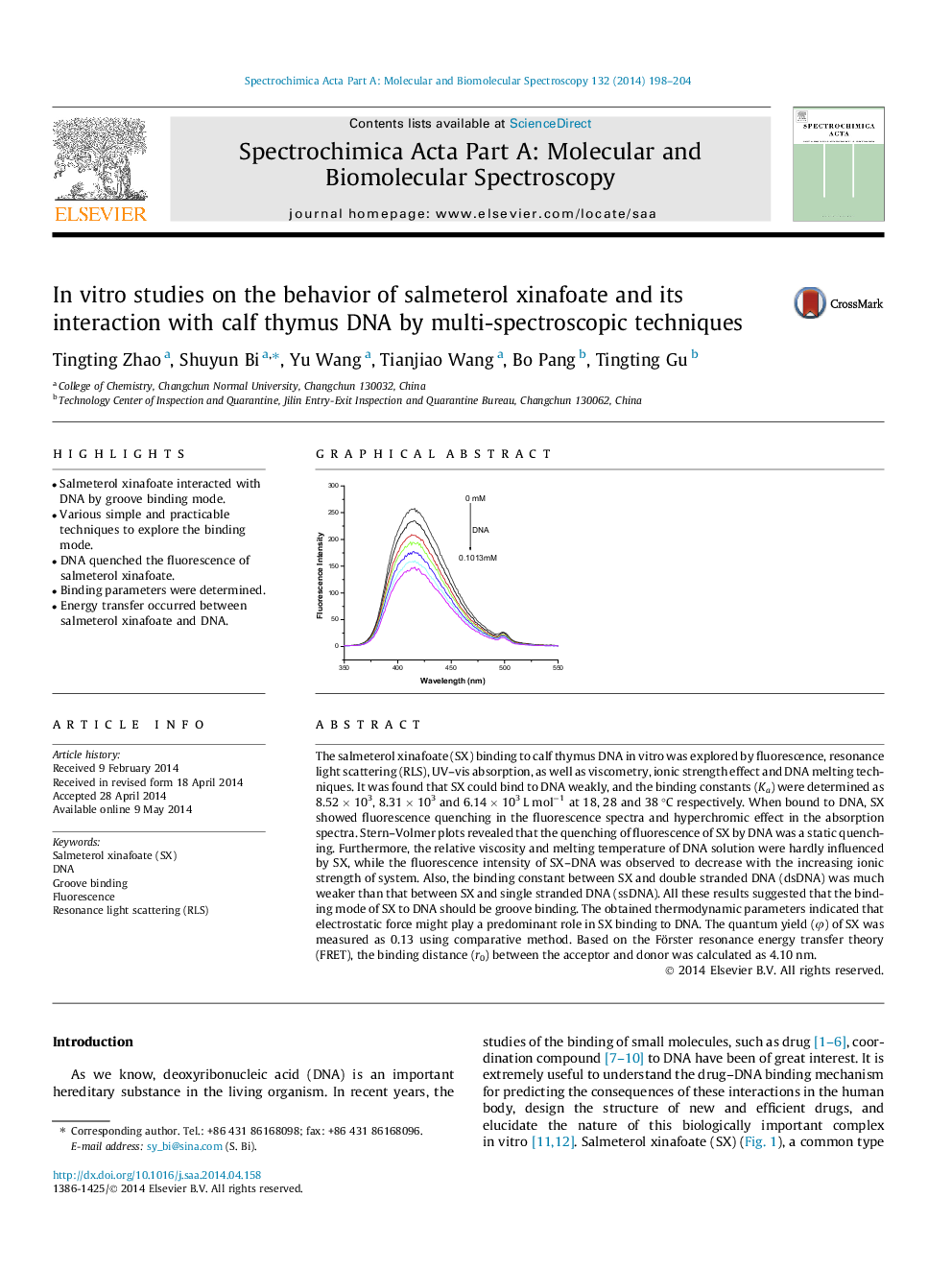| کد مقاله | کد نشریه | سال انتشار | مقاله انگلیسی | نسخه تمام متن |
|---|---|---|---|---|
| 1229575 | 1495236 | 2014 | 7 صفحه PDF | دانلود رایگان |

• Salmeterol xinafoate interacted with DNA by groove binding mode.
• Various simple and practicable techniques to explore the binding mode.
• DNA quenched the fluorescence of salmeterol xinafoate.
• Binding parameters were determined.
• Energy transfer occurred between salmeterol xinafoate and DNA.
The salmeterol xinafoate (SX) binding to calf thymus DNA in vitro was explored by fluorescence, resonance light scattering (RLS), UV–vis absorption, as well as viscometry, ionic strength effect and DNA melting techniques. It was found that SX could bind to DNA weakly, and the binding constants (Ka) were determined as 8.52 × 103, 8.31 × 103 and 6.14 × 103 L mol−1 at 18, 28 and 38 °C respectively. When bound to DNA, SX showed fluorescence quenching in the fluorescence spectra and hyperchromic effect in the absorption spectra. Stern–Volmer plots revealed that the quenching of fluorescence of SX by DNA was a static quenching. Furthermore, the relative viscosity and melting temperature of DNA solution were hardly influenced by SX, while the fluorescence intensity of SX–DNA was observed to decrease with the increasing ionic strength of system. Also, the binding constant between SX and double stranded DNA (dsDNA) was much weaker than that between SX and single stranded DNA (ssDNA). All these results suggested that the binding mode of SX to DNA should be groove binding. The obtained thermodynamic parameters indicated that electrostatic force might play a predominant role in SX binding to DNA. The quantum yield (φ) of SX was measured as 0.13 using comparative method. Based on the Förster resonance energy transfer theory (FRET), the binding distance (r0) between the acceptor and donor was calculated as 4.10 nm.
Figure optionsDownload as PowerPoint slide
Journal: Spectrochimica Acta Part A: Molecular and Biomolecular Spectroscopy - Volume 132, 11 November 2014, Pages 198–204